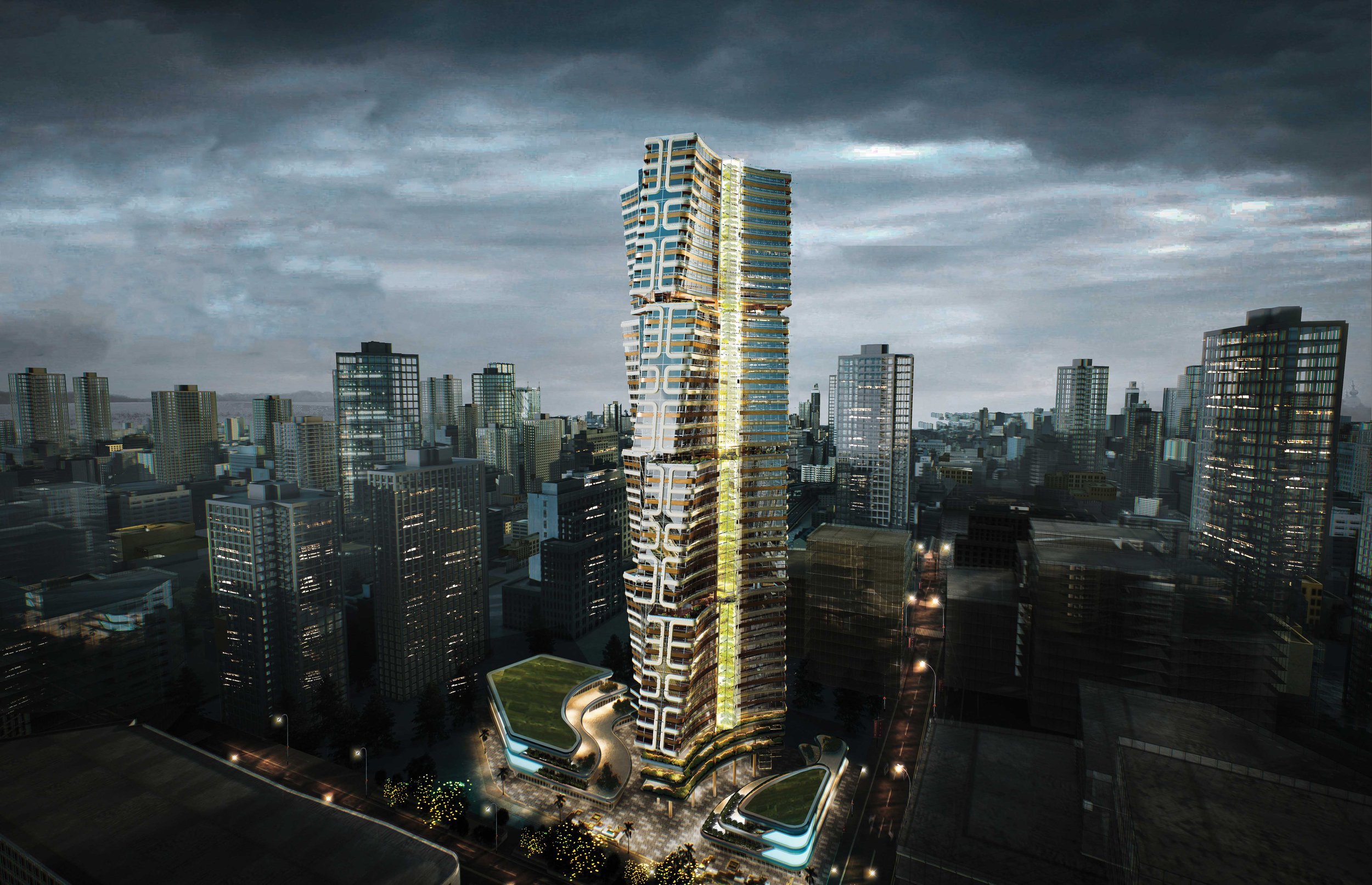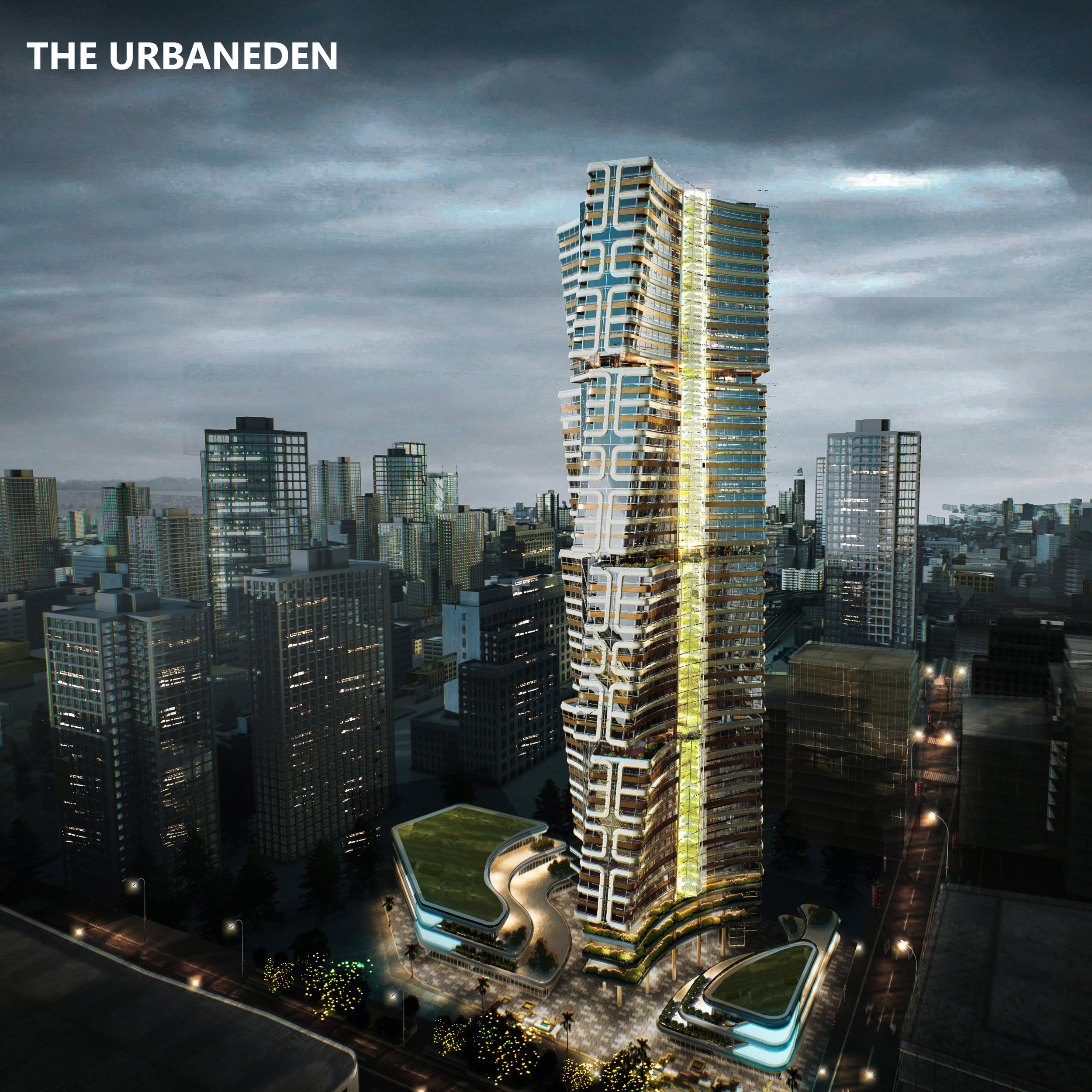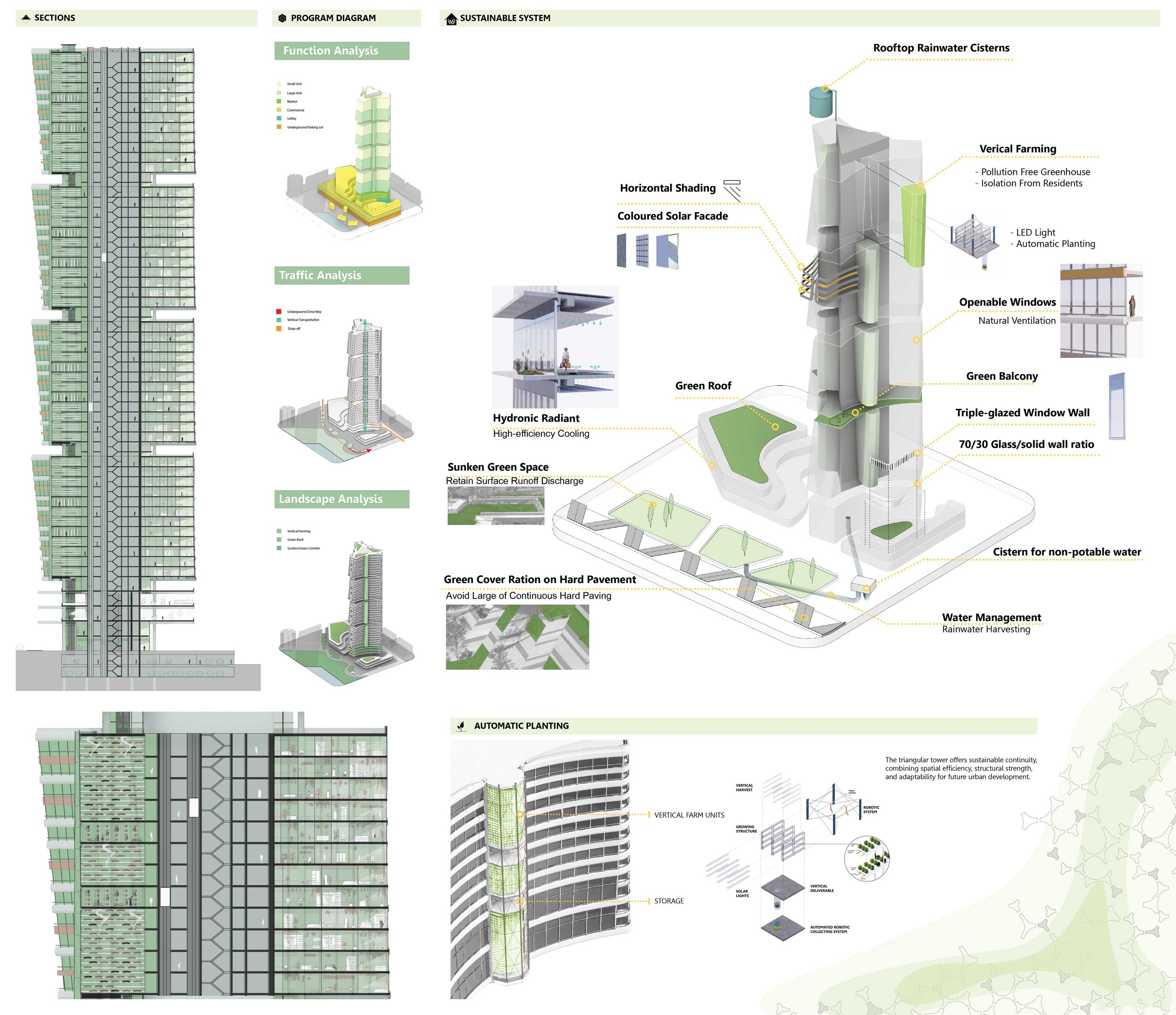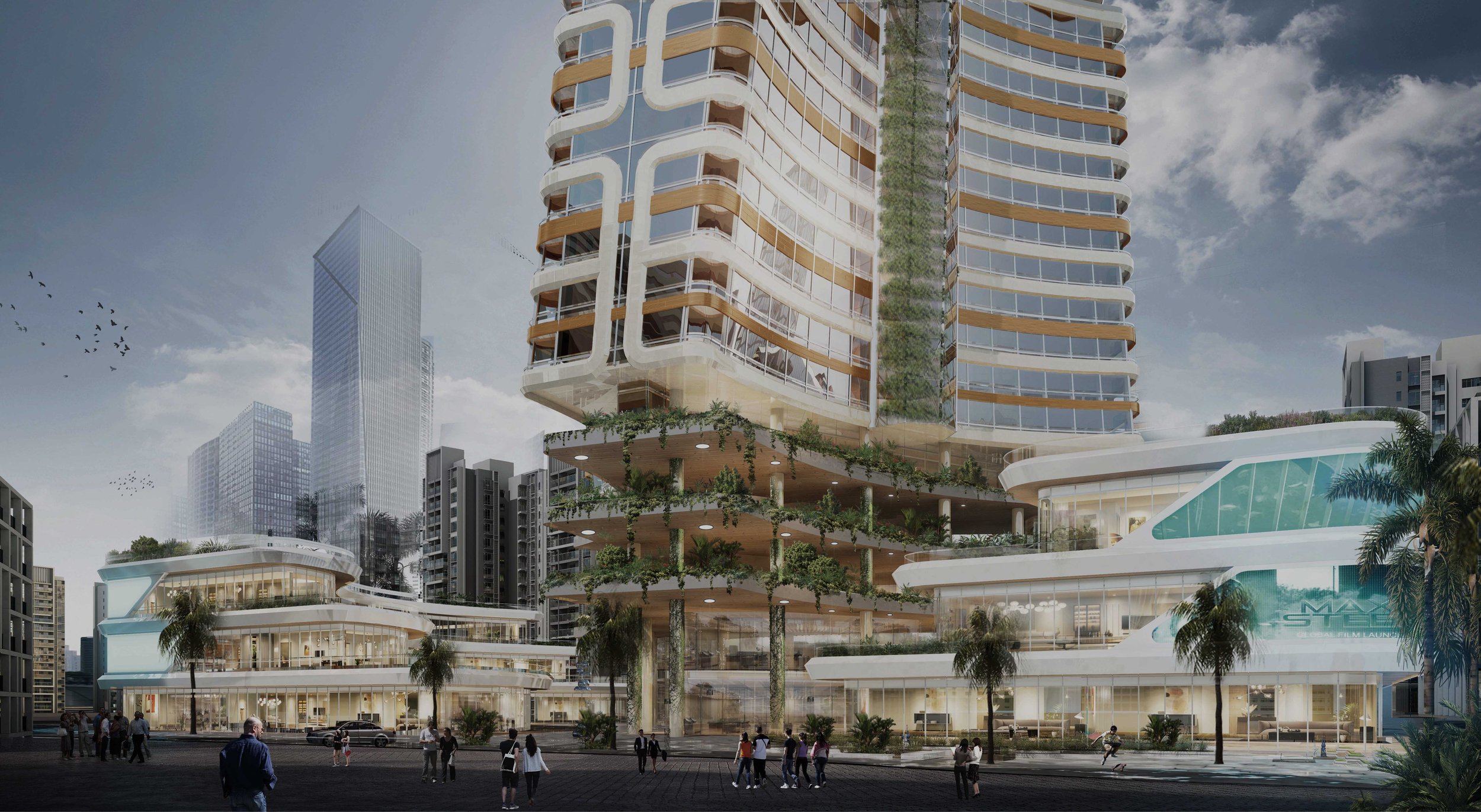
THE URBANDEN
SANDBOX COMPETITION: GREEN TOWER HONG KONG
AWARD: FINALIST, HONORABLE MENTIONS
AUG, 2023
CREDITS: Mingyang Li, Qiqi Liu, Yujia Qi
The Tower of Asclepius project aims to provide affordable housing solutions for high-density cities, offering more rational construction methods on limited land. It is not solely designed for a specific city like Hong Kong, but rather presents a universal solution applicable to high-density cities worldwide.
The Tower of Asclepius adopts a basic triangular shape that can infinitely vary and combine into multiple arrangements. The building itself repeats in modules of 12 floors, allowing for vertical expansion. Each side of the module features a protruding vertical farm. These vertical farms are fully automated, mechanised productions managed by robotic arms. They incorporate advanced water circulation systems and are designed as relatively enclosed spaces to prevent contamination.


Residents can observe the growth of the farms from the corridors. As night falls, the centre of the entire building emits a green glow, resembling a vine, wrapping around the structure, harmoniously blending with the city. This design provides residents with opportunities to appreciate and participate in farm activities. Additionally, it enhances the aesthetic value of the building while promoting environmental friendliness.
The innovative design of the Tower of Asclepius integrates the housing needs of high-density cities with agricultural production, aiming to achieve sustainable development and a harmonious coexistence between urban areas and nature. By offering affordable housing, creating green spaces, and fostering urban agriculture, the project creates a more livable environment for urban dwellers.
The vertical farms on the Tower of Asclepius play a crucial role in addressing food security in densely populated areas. By utilizing vertical space, they maximize agricultural output without requiring vast amounts of land. The mechanized and automated nature of these farms ensures efficient production, and the centralized management by robotic arms allows for precise control over cultivation processes.
The water circulation systems within the vertical farms employ advanced technologies such as hydroponics or aeroponics, reducing water consumption compared to traditional farming methods. Additionally, the enclosed design prevents pests and diseases from affecting the crops, reducing the need for pesticides and herbicides. The farms can also employ renewable energy sources, such as solar panels, to power their operations, further reducing their environmental impact.


In terms of community benefits, the Tower of Asclepius promotes a sense of unity and shared responsibility. Residents have the opportunity to actively engage in farming activities, fostering a connection with nature and promoting sustainable practices. The presence of green spaces within the building enhances the overall well-being of residents, providing opportunities for relaxation, recreation, and improved air quality.
The Tower of Asclepius represents a forward-thinking approach to urban development, addressing the challenges of high-density cities while prioritizing sustainability, food security, and the well-being of residents. By incorporating vertical farms into the architectural design, it creates a symbiotic relationship between nature and urbanization, ultimately contributing to the healing and revitalization of cities.
